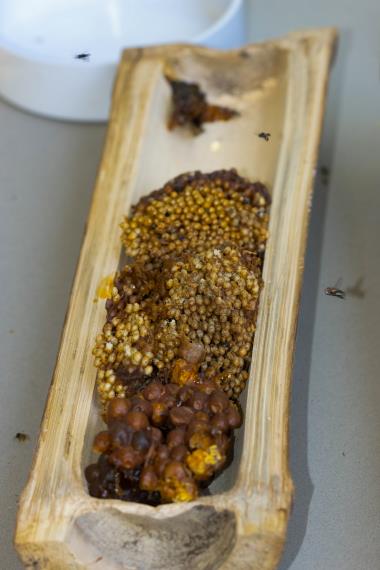Our branch had the privilege of having Dr Tim Heard present a full day workshop at Mission Beach, this month. Tim delivered his informative presentation on all things to do with bees including an insightful practical session. There were lots of interesting questions, discussion points and observations from the audience throughout the day.
We noted that our Far North Qld clypearis bees create an entrance veil at night similar to some Austroplebeia species. Also, tropical requirements for hive protection were compared to southern requirements. In the north, hives generally do poorly in any sun without serious insulation or a shady location in the north. Roofing needs to be well designed in order to provide protection from torrential wet season rain and standard metal hive roofing used in the south may not always be enough to protect a hive in a downpour.
In the practical session, we first observed Roger’s clypearis hives, one vertical and one horizontal. Just about every-one’s house on the coast of FNQ has clypearis (or sapiens) hives in the external structures of their houses. The brood is usually clustered together. Roger’s horizontal hive was very unusual in that the new brood was at one end of the box and older brood was at the other end.
Next, we looked at a 35+ years old, 5 storey hockingsi hive belonging to Paul Anderson. Paul is one of our colourful local native bee keepers from Cardwell. He and his father have kept bees for many years and we were fortunate to have him open his hive and talk us through the process he uses for honey collecting and hive propagation through splitting. Interestingly, Paul prioritises finding queen cells when splitting to ensure requeening of the split. He places so much emphasis on this that he will abandon the split, close the hive up and return another day if no queen cells can be spotted.
Paul uses ply to construct his boxes which makes construction cheap but they have to be housed under cover to give them longevity as the ply is not suitable for expo-sure to the elements. This led to further discussion about hives and noted that our northern bees are not only preyed upon by small insects but also rodents such as melomys, mosaic rats and white tail rats which are able to wreak havoc on hives by chewing through the timber.










